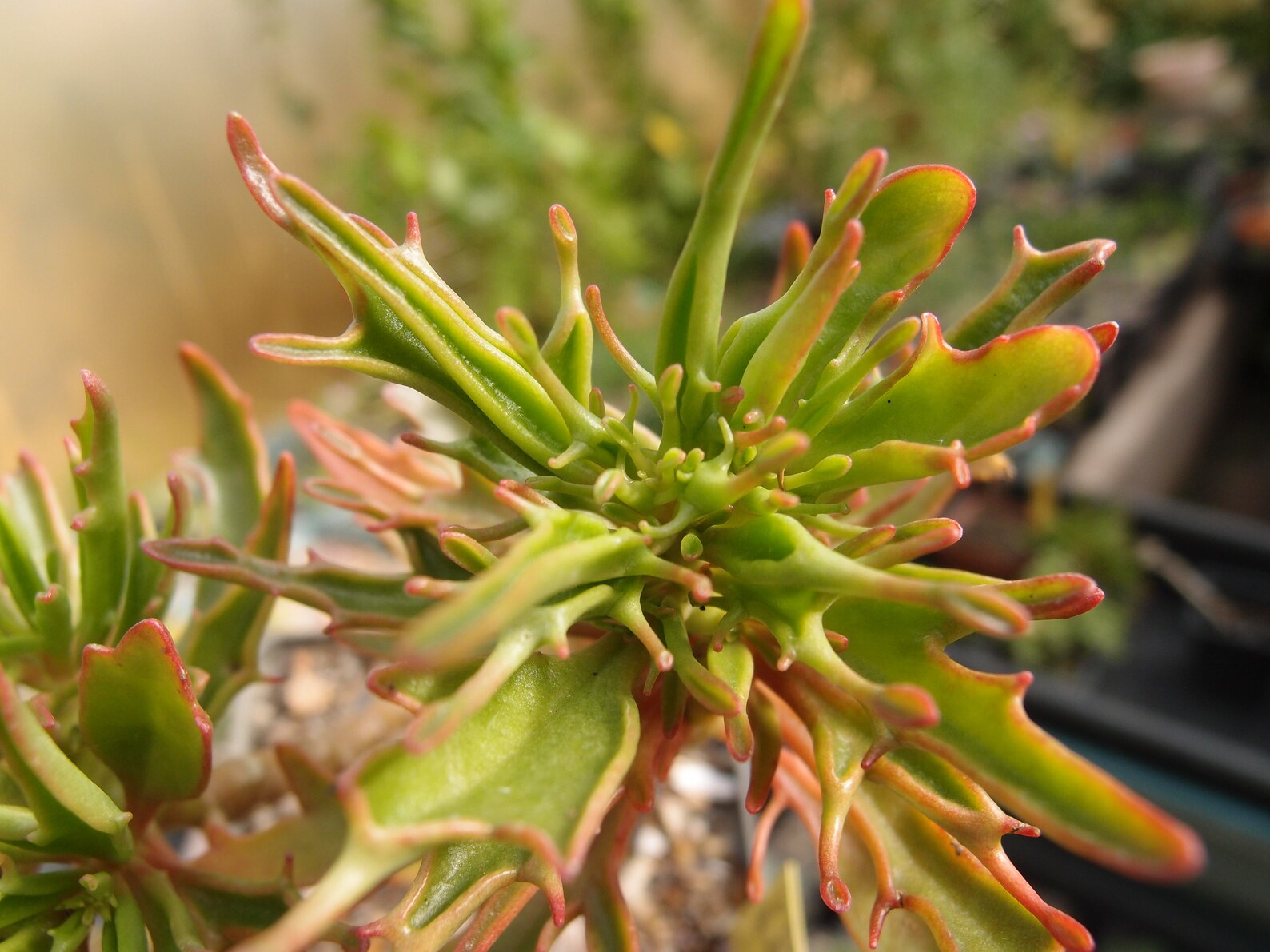With their long, arching leaves and ability to thrive in various conditions, spider plants are a popular houseplant choice. Their adaptability leads some to wonder – are spider plants actually succulents?
While they share some traits, spider plants are not true succulents. But they do have a similar care profile that makes them great companions. Let’s explore what defines a succulent, how spider plants differ, and how to best grow them together.
What Makes a Plant a Succulent?
Succulents are plants that store water in their leaves, stems, or roots This allows them to withstand extended periods of drought
Some signature succulent features
- Thick, fleshy leaves and stems that hold moisture. Many have a waxy coating to prevent water loss.
- Prefers arid conditions with excellent drainage. Doesn’t tolerate soggy soil.
- Ability to thrive with infrequent watering due to internal water storage abilities.
- Often native to deserts and other water-scarce regions. Adapted to hot, sunny climates.
- Includes cacti along with non-cactus succulents like aloe, echeveria, jade plants, and more.
- Slow growth and low maintenance needs.
How Spider Plants Differ from Succulents
At first glance, the long slim leaves of spider plants somewhat resemble succulents like string of pearls. But the similarities stop there.
Some key differences:
- Leaves and stems are smooth and thin, not plump and fleshy. Don’t store excess moisture.
- Prefers consistently moist soil. Doesn’t tolerate drought well.
- Native to tropical Africa. Thrives in humid conditions.
- Faster growth rate and attain larger size than most succulents.
- Appreciates bright light but can tolerate some shade. Not as intensely sun-loving.
So while spider plants have adapted to drier periods better than some houseplants, they lack the defining water storage capabilities of a true succulent.
Can You Plant Spider Plants and Succulents Together?
Absolutely! Despite not being a succulent itself, the spider plant makes a great companion for succulents.
Here are some tips for growing spider plants with succulents:
- Use a fast-draining potting mix designed for cacti and succulents. This provides the excellent drainage succulents need.
- Water when the top inch of soil is dry. This allows the soil to thoroughly dry out between waterings, which succulents prefer.
- Include cacti and succulents with lower water needs than spider plants. Such as aloe, jade plant, echeveria, sansevieria, and senecio.
- Plant the succulents around the edges of the container. Situate the spider plant in the center. This prevents it from overtaking slow growing succulents.
- Provide bright, indirect light. A south or west window is ideal. Supplement with grow lights if needed.
- Use terra cotta pots to promote healthy moisture levels for all plants.
With these tips, a mixed succulent and spider plant pot makes an easy-care windowsill display! Their complementary watering and lighting needs allow them to thrive side-by-side.
Typical Traits of Spider Plants
Now that we’ve covered how spider plants differ from succulents, let’s take a closer look at their defining features:
- Clumping perennial plant that produces offsets or “pups” on long stems. These can be removed and propagated.
- Long, slender foliage that arches and trails as the plant matures. Leaves can reach up to 18 inches long.
- Thrives in average room humidity and temperature ranges comfortable for people.
- Tolerates low light but grows best in moderate to bright indirect light. Can adapt to various conditions.
- Prefers soil that dries slightly between waterings but doesn’t get overly dry. Prone to root rot if overwatered.
- Minimal fertilizer needs. Occasional light feeding during spring and summer growing season.
- Easy to grow and maintain. Excellent for beginner gardeners and low maintenance spaces.
- Helps purify indoor air by removing toxins like formaldehyde, xylene, and toluene.
Caring for Spider Plants and Succulents
Spider plants and succulents both shine with minimal care requirements. Here are some general guidelines for keeping them healthy:
- Water thoroughly only when the top 1-2 inches of soil are dry. For succulents, allow more time between waterings.
- Use containers with drainage holes and gritty, well-aerated potting mixes.
- Prune spider plant stems once they produce several offsets. Remove offsets for propagation.
- Dust succulent leaves occasionally to prevent blocked photosynthesis. Use a damp cloth on spider plant leaves to clean.
- Repot annually in spring to provide fresh soil and room for growth. Go up 1 pot size at a time.
- Fertilize lightly to avoid buildup. Flush soils every 3-4 months.
- Keep in average home temperatures between 65°F-80°F. Protect from cold drafts.
With proper care, both spider plants and succulents will flourish! Their adaptability and low maintenance needs make them ideal companions.
The Takeaway
To summarise, the spider plant is not a true succulent but shares some similar growing requirements that allow the two to be paired together successfully indoors. With attention to watering frequency, soil drainage, and light levels, a mixed succulent-spider plant container can thrive!
How to Make a Spider Plant Bushier & Lush 8 Tricks
FAQ
What is a spider plant classified as?
Can I use succulent soil for spider plants?
How often should you water a spider plant?
Do spider plants need to hang?
- The Ultimate Guide to Growing Strawberries in Raised Beds - August 8, 2025
- No-Dig Garden Beds: The Easiest Way to Grow a Beautiful Garden - August 6, 2025
- How to Protect and Preserve Wood for Raised Garden Beds - August 6, 2025

